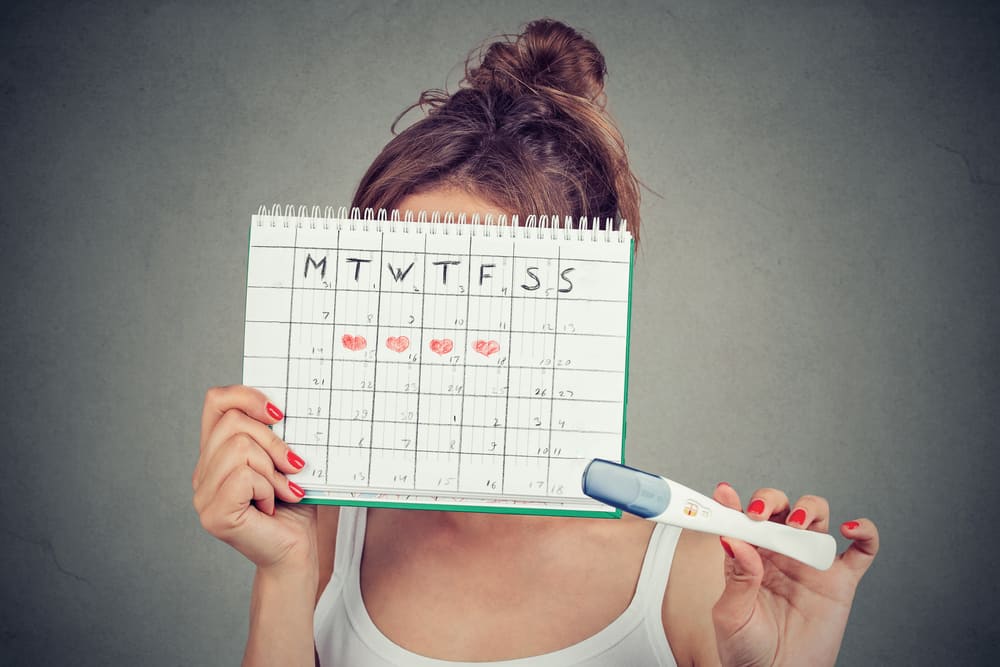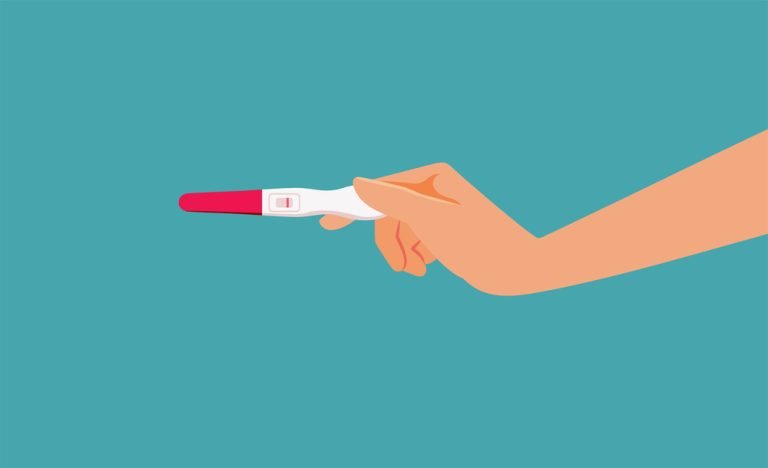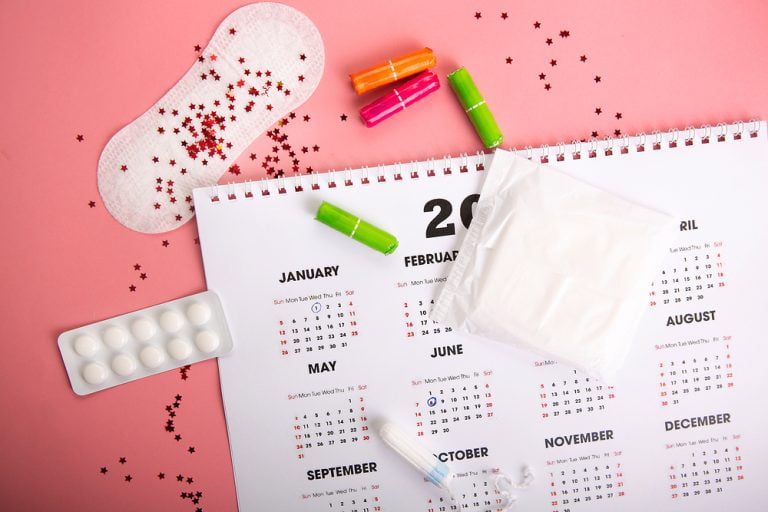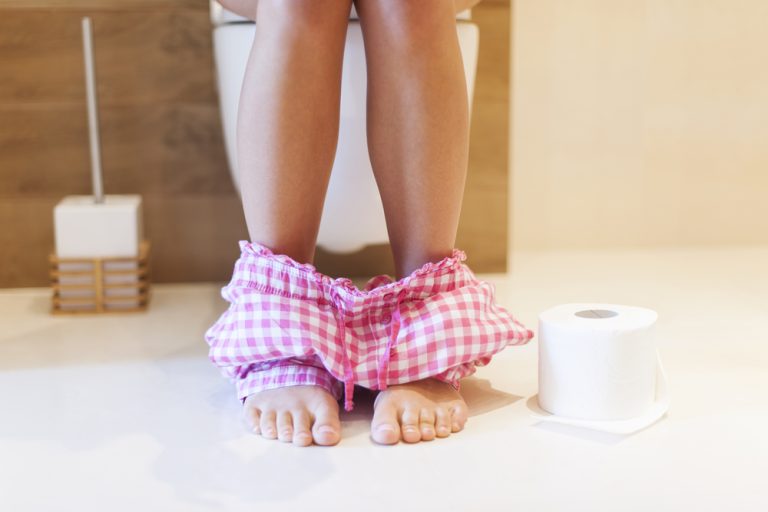If you menstruate, one of the best things you can do for your well-being is to track your cycle. It is incredibly useful for conception and family planning and can help you understand your mood, identify random abdominal pains, and demystify your libido. Once you’ve cracked it, you can even plan your skincare routine around it!
Happily, there are lots of great resources to find out when you’re ovulating. But that’s only part of the story, and it’s just as important to know when you’ve stopped.
To help you figure out your cycle from start to finish, here are the eight signs ovulation is over and how to check each one.
How to Tell You’ve Finished Ovulating
1. Cervical Mucus
If you pay attention, you’ll notice that the consistency of your cervical mucus changes dramatically throughout your cycle.
During ovulation, it will be thin, clear, and slippery to provide a better environment for sperm. It’ll closely resemble the texture of egg whites, which is why it’s sometimes called “egg white discharge.”
When ovulation is over, your discharge will thicken and turn white or yellow-white. This creates a toxic environment for sperm and drastically lowers your chances of pregnancy.
While checking your discharge might seem a little weird, it’s incredibly accurate and can track ovulation in 91% of cases. It’s also an effective indicator of vaginal health, so it’s good to keep an eye on it anyway.
How to Check Your Cervical Mucus
First, you need some of your cervical mucus, and there are two ways to get it:
Non-Invasive Method
- Check your toilet paper after urinating.
Finger Inspection
- Wash your hands thoroughly.
- Stand with one leg on a bath, sit on the toilet, or squat.
- Insert your middle or index finger into your vagina.
- Collect some cervical mucus with your finger; directly from your cervix is best.
Once you have your mucus, roll it between your fingers and compare its texture to this table:
| Texture | Point in Menstrual Cycle |
| Dry and sticky | Ovulation hasn’t begun or is over |
| Creamy like lotion | Ovulation is approaching |
| Thin and watery | Ovulation is close |
| Stretchy like egg white | You are ovulating |
2. Vaginal Dryness
It’s not just the texture of your discharge that changes throughout your cycle, but also the amount.
During ovulation, when your body is trying to help sperm reach the egg, your cervical fluid volume will peak, and you may feel the need to wear a panty liner.
When ovulation has ended, your levels of discharge will drop sharply, and you may feel drier than usual.
Checking this is a little harder to master, but in tests, around 76% of women could do it accurately enough to track their ovulation.
How to Check Your Cervical Fluid Levels
- Look at your toilet paper after urinating and note how much, if any, mucus is on it.
- Inspect your underwear or panty liner and note if you see any discharge.
- Be mindful of how wet or dry your vagina feels daily, and write it down.
3. Basal Body Temperature
Due to hormonal changes, your BBT (basal body temperature) rises and falls throughout your cycle, repeating each month.
Around 24 hours after you ovulate, you’ll have a surge in the hormone progesterone. This will cause your BBT to rise by 0.5 to 1OC. So if you track your temperature throughout the month and spot a sudden increase, it likely means ovulation is over.
Of course, it could also mean you’ve developed a fever or had too much alcohol. Therefore, this method isn’t 100% accurate.
How to Check Your Basal Body Temperature
- Get a special BBT thermometer, accurate to 2 decimal places.
- Every morning, before you get out of bed, take your temperature under your tongue.
- Note it down or track it in an app.
- When you notice a rise of more than 0.5OC, you’ve finished ovulating.
4. Cervix Height and Firmness.
For sperm to meet your egg, it must first pass through your cervix. So, it’s unsurprising that it’ll be higher, softer, and slightly open during your fertile window.
Then, when ovulation has passed, your cervix closes, firms up, and drops into a lower position.
You’ll need to check it throughout your cycle to get to know what it feels like. But, generally, a firm cervix will feel like pushing on the end of your nose.
How to Check Your Cervix
- Plan to check your cervix at the same time every day to make it easier to detect changes.
- Wash your hands.
- Stand with one leg raised on a step, bath, or toilet, just like when inserting a tampon.
- Insert your middle or index finger into your vagina as far as possible.
- Aim straight upwards, imagining your vagina as a hallway and your cervix as the door at the end.
- You should find something that feels round and firmer than your vaginal walls; this is your cervix.
- You may be ovulating if you can’t reach it, as the position is higher.
- If it’s easy to reach and as firm as the end of your nose, ovulation has passed.
5. Fall in Libido
During your fertile window, you may be more interested in sex. This is Mother Nature’s way of giving you the best chance to get pregnant.
Of course, the flip side is that your libido will drop once you’re done ovulating.
How to Track Your Libido
- Keep a note of your libido in a journal or on your phone.
- A good strategy is to use color-coded dots or letters indicating whether or not you felt in the mood.
6. Abdominal Cramps Stop
While ovulating, you may feel abdominal cramps, bloating, and tenderness. This is caused when your follicles rupture and release small amounts of blood or fluid, irritating the lining of your abdomen. You may also experience a little spotting.
When these symptoms subside, it’s a good indication that ovulation has passed.
How to Identify Ovulation-Related Abdominal Cramps
- Small amounts of cramping in the middle of your menstrual cycle are likely to be a sign of ovulation.
- They may present as bloating, pain, or popping sensations.
- Again, you should note it on your calendar, phone, or in a journal and compare it to other symptoms.
- When the pain subsides, ovulation is over.
7. Breast Tenderness
As you enter the luteal phase of your cycle, a progesterone spike may cause your breasts to feel swollen and tender.
How to Track Breast Tenderness
You don’t need to check your breasts every day. But if you do notice they feel sore or are spilling out of your bra, note it down. If it corresponds with other signs on this list, you’ve probably stopped ovulating.
8. Spots and Breakouts
In the first half of your cycle, you’ll experience a surge of estrogen that stimulates the production of collagen, elastin, and hyaluronic acid. This will give you a glowing, plump, and wrinkle-free complexion.
Then, when ovulation has ended, progesterone takes over. This hormone stimulates the production of sebum, which can clog your pores and cause breakouts.
How to Check Your Skin for Signs That Ovulation Has Ended
Skin symptoms to look for include:
- Oiliness
- Greasiness
- Tight pores
- Clogged Pores
- Breakouts
Combat the worst of the effects with a clay mask. This will soak up the oil and draw out impurities from your pores.




